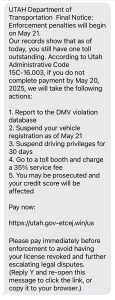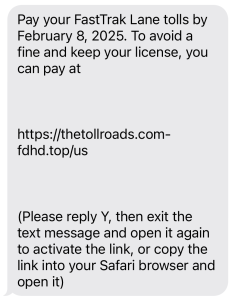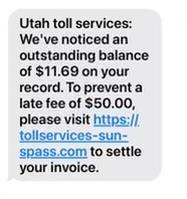Pavement Markings
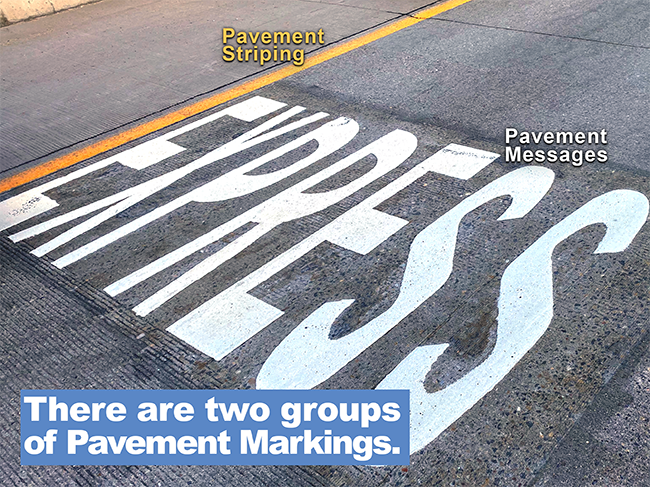
The Pavement Markings UDOT uses are retroreflective, which means they reflect light back to its source; for example, reflecting light from an automobile’s headlights back to the automobile. The retroreflective markings on roads that UDOT maintains are composed of two major components:
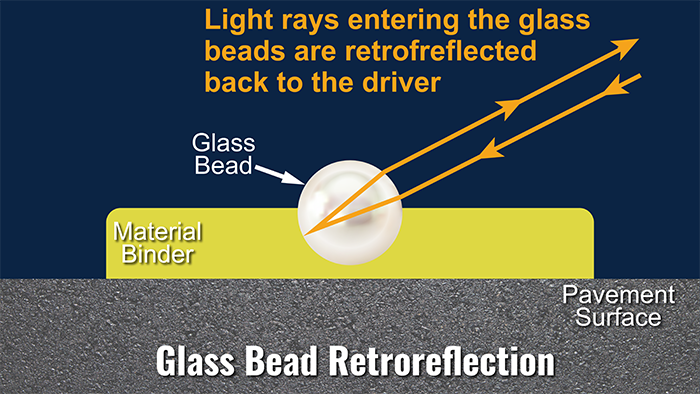
- Tiny glass beads.
- A binder that holds the beads to the roadway, including paint, tape, thermoplastic, or epoxy.
These two components allow for the light from a driver’s headlights to be reflected back to the driver causing retroreflection by the glass beads, providing illumination of the marking to the driver.
To assure UDOT follows uniform standards for Pavement Markings the Department uses the Manual on Uniform Traffic Control Devices for Streets and Highways (MUTCD). This provides drivers with consistency when using any street, highway, bikeway, or private road open to public travel.
The following pages have been created to help citizens understand UDOT’s efforts to maintain and improve pavement markings. We have also gathered common questions about pavement markings and our Asset Engineer has provided responses below. If you have additional questions, you can contact us using many options available on the Contact UDOT webpage.
Frequently Asked Questions
UDOT often receives questions and comments about Pavement Markings. The most frequently asked questions are included below:
Why is striping so hard to see in the dark?
Glass beads are trying to reflect the headlights back to the driver, thus providing illumination. If glass beads are missing due to traffic or snowplow operations, the striping may not have the ability to reflect the headlights back to the driver, making the striping more challenging to see in the dark. If you’re having a difficult time seeing the markings, please slow down to a speed at which you feel more safe to drive.
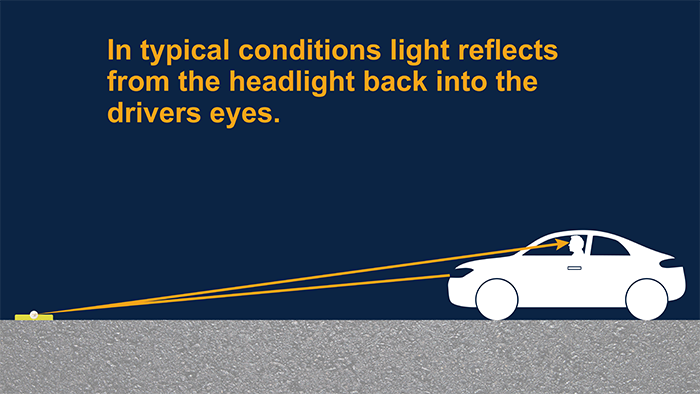 |
 |
Why is striping so hard to see when roads are wet?
During rain and wet conditions glass beads are submerged or covered by water, which makes it more difficult to reflect the light back to the driver.
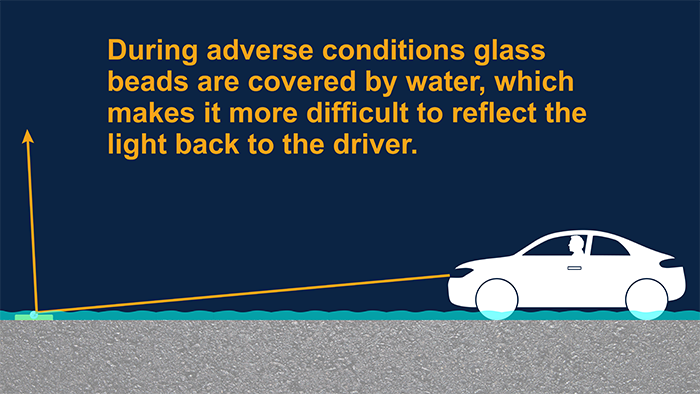 |
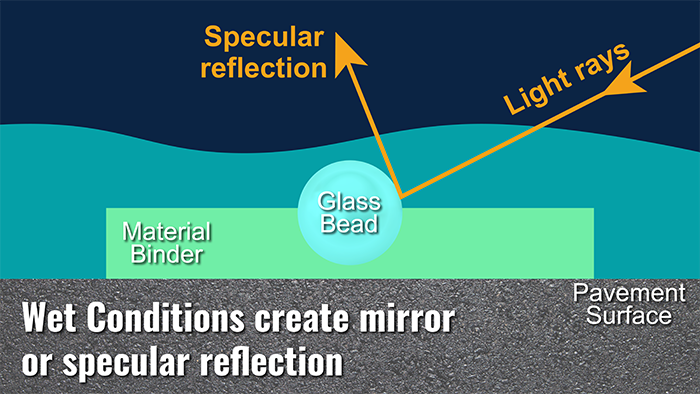 |
The striping on my route is missing or faded. When will UDOT restripe?
Fading and wear and tear are due to the amount of traffic using the route as well as snowplow operations. How often UDOT replaces the striping depends on the type of striping used. UDOT uses several different striping materials and each has a different life span. For example, waterborne paint only lasts about a year with high levels of traffic and snow removal efforts. More durable markings, like tape, epoxy, and thermoplastics, last multiple years.
Where waterborne paint is used, UDOT is putting it down annually on most routes. To help protect tape and epoxy striping, UDOT places it in grooves in the roadway to protect it from snowplow blades. With the protective grooves UDOT replaces tape every 6 to 9 years. Epoxy and thermoplastics are replaced every 3 to 5 years.
Crews are constantly monitoring roadway striping and make recommendations when it is reaching ineffective levels and needs replacement. Keep in mind replacing striping is not something that can take place year round and restriping projects only take place in the warmer weather.
For more information about striping materials please visit the Pavement Marking and Striping Materials webpage.
I travel through a construction project and the stripes have been moved making it hard to tell old striping from current. Why does UDOT do this?
Temporary waterborne paint or tapes are applied during construction to provide guidance to drivers through construction zones. These temporary changes to traffic patterns allow UDOT to keep as many lanes open as possible. It is important for drivers to remember to slow down and be cautious in construction zones due to the changes they may encounter. Removing the temporary markings by either water blasting or grinding unfortunately sometimes leaves a scar on the pavement surface. Overtime this will become less noticeable. Our recommendation is always: if you can’t see the markers or feel unsafe, slow down to a speed at which you feel comfortable.
Can UDOT add turn lane guidance stripes to an intersection I use regularly to help drivers stay in their lane?
It may be possible, but UDOT Traffic Engineers would need to evaluate the intersection to determine what would be appropriate. Generally they assess the intersections when a project is in the area and recommend safety improvements based on things like the number of lanes, visual concerns, and driver behavior. They use criteria found in the Utah Manual on Uniform Traffic Control Devices to determine where dotted guidance striping should be placed. In between projects they review areas based on requests and appreciate driver feedback since they are not able to be in the area nearly as much as someone who drives it on a daily basis. If you have an intersection you would like to let them know about, please use the UDOT Click ‘n Fix app or the other contact methods mentioned on the Contact UDOT webpage.
What is UDOT doing to improve pavement striping?
UDOT takes safety very seriously and always strives to improve pavement marking visibility and durability. To assure that UDOT continues to make improvements the Department in involved in several projects and studies. Current initiatives include:
- National Transportation Product Evaluation Program (NTPEP) – Striping Test Deck in Tremonton, Utah
- Wet Reflective Elements Study on I-15 in Salt Lake County
- Durable Markings Condition Data Collection
- Urban Interstate Enhanced Striping Project
Why doesn't UDOT use what I've seen in other states like raised markers or recessed reflective markers?
Raised or recessed pavement markers have been somewhat controversial for a number of reasons here in Utah. Since raised pavement markers extend above the roadway surface, snowplow blades catch and damage them more easily and they also damage the blades. UDOT has experimented with raised markers by having a vendor install several on I-15 near Cove Fort. The first time a snowplow came through the area most were destroyed.
Recessed reflective markers were also installed and evaluated around Utah on I-15 and US-89. These markers were evaluated over a four year period and they also presented maintenance and replacement challenges as well as some challenges for our snowplow operations and eventually all of them were removed.
Where can drivers find information about what pavement markings mean?
The Utah Driver Handbook provides information about Pavement Markings and how they should be treated by drivers. It can be found on the Utah Department of Public Safety Driver License Division website.
